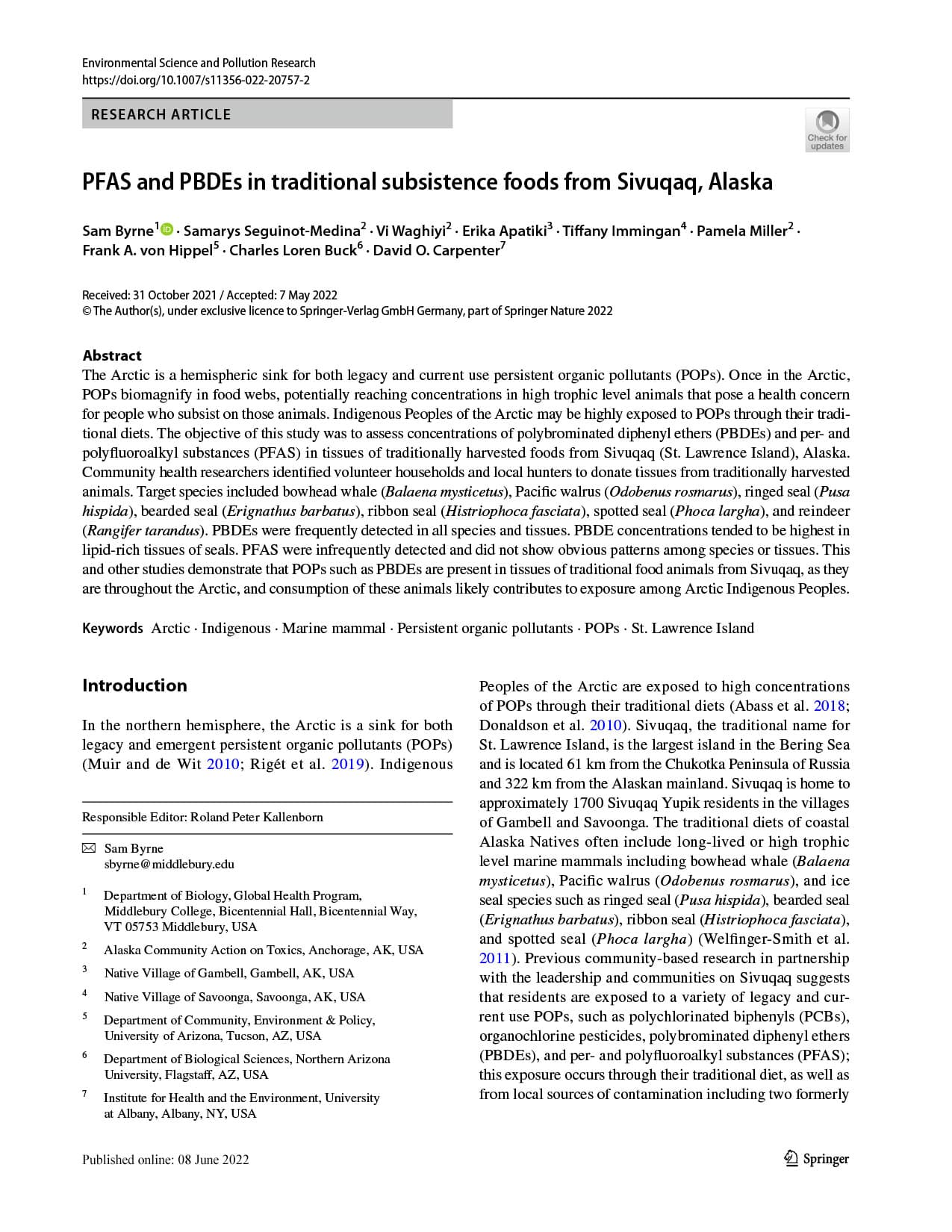PFAS and PBDEs in traditional subsistence foods from Sivuqaq, Alaska
About/Abstract
The Arctic is a hemispheric sink for both legacy and current use persistent organic pollutants (POPs). Once in the Arctic, POPs biomagnify in food webs, potentially reaching concentrations in high trophic level animals that pose a health concern for people who subsist on those animals. Indigenous Peoples of the Arctic may be highly exposed to POPs through their traditional diets. The objective of this study was to assess concentrations of polybrominated diphenyl ethers (PBDEs) and per- and polyfluoroalkyl substances (PFAS) in tissues of traditionally harvested foods from Sivuqaq (St. Lawrence Island), Alaska. Community health researchers identified volunteer households and local hunters to donate tissues from traditionally harvested animals. Target species included bowhead whale (Balaena mysticetus), Pacific walrus (Odobenus rosmarus), ringed seal (Pusa hispida), bearded seal (Erignathus barbatus), ribbon seal (Histriophoca fasciata), spotted seal (Phoca largha), and reindeer (Rangifer tarandus). PBDEs were frequently detected in all species and tissues. PBDE concentrations tended to be highest in lipid-rich tissues of seals. PFAS were infrequently detected and did not show obvious patterns among species or tissues. This and other studies demonstrate that POPs such as PBDEs are present in tissues of traditional food animals from Sivuqaq, as they are throughout the Arctic, and consumption of these animals likely contributes to exposure among Arctic Indigenous Peoples.
Keywords/Info
- Arctic
- Indigenous
- Marine mammal
- Persistent organic pollutants
- POPs
- St. Lawrence Island

